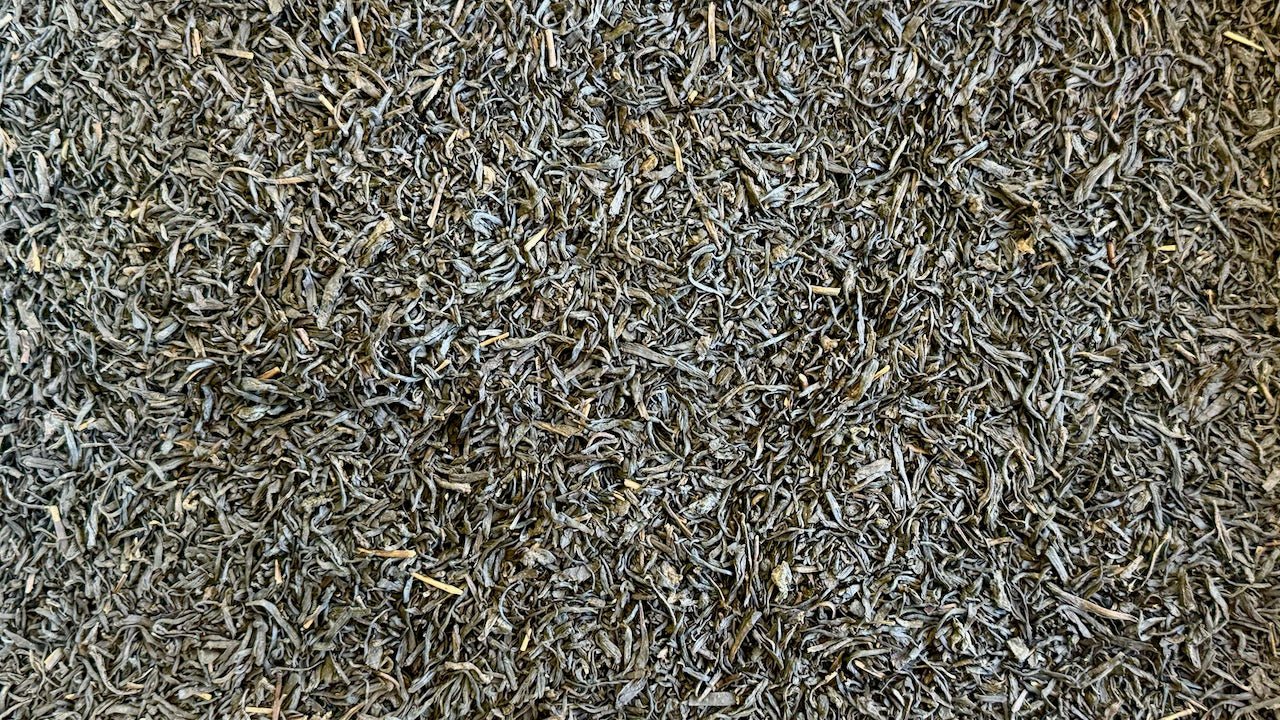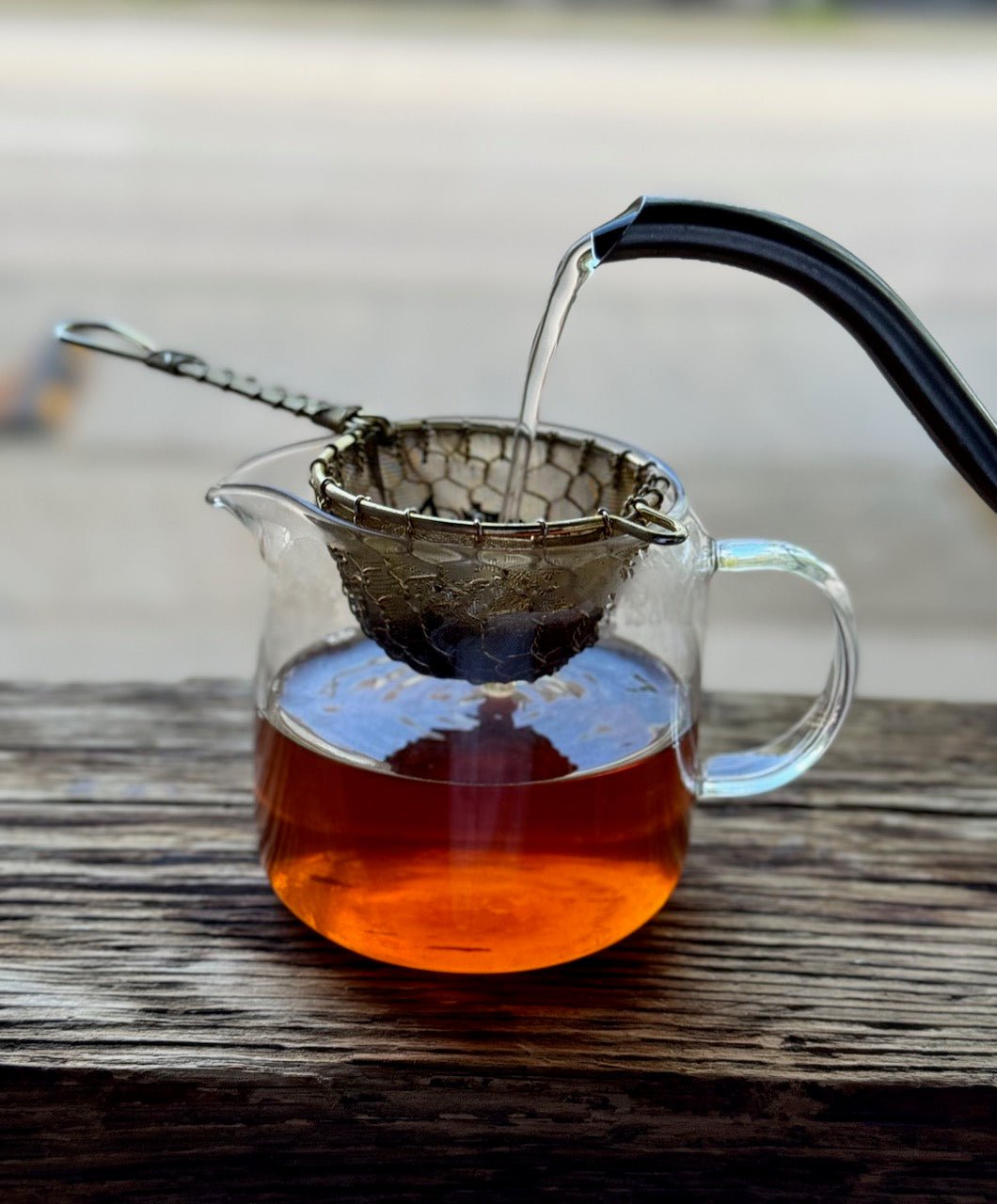The sweet, homely aroma of freshly baked buns loaded with dried fruit stems from the fermentation of tea leaves with koji.
Type: Dark
Sub-Type: controlled fermentation (Koji)
Origin: Haruno, Shizuoka, Japan
GPS: 35.02°N | 138.3°E
Grower: Isagawa (organic) cooperative
Producer: Osada Natsumi
Cultivars: sun rouge (サンルージュ)
The Sun Rouge (サンルージュ) Cultivar:
Sun Rouge is a very recent creation. It was developed by the Japanese National Agricultural Research Organization in collaboration with The Nippon Paper Group. The cultivar was registered in 2009 and originally (over 5 years) sold uniquely through The Nippon Paper Group.
What is so cool about the Sun Rouge Cultivar?
-
It was originally developed to contain a high concentration of anthocyanin, a pigment present in blueberries, açai, butterfly pea, blue corn and a bunch of other ingredients popularly called 'superfoods'. These goal was to create a tea variety with antioxidant and anti-eye straining effects.
-
It descends from a Camelia Taliensis plant from (most likely) Yunnan. Starting with Camelia Taliensis seeds, The National Agricultural Research Organization developed a cultivar called Cha Nakamamo Honno No. 6 (茶中間母本農6号); it had fairly low yields. For years, the Organization selected offsetting from Cha Nakamamo Honno No. 6 until they came up with the current Sun Rouge.
-
Just like butterfly pea, brewing fresh leaves (or sencha) seems to yield an infusion that alters colour with the addition of acidic ingredients.
The latter is, of course, not as noticeable in dark tea as it would be in green.
Sources for historical and technical data:
https://www.naro.go.jp/collab/breed/0200/0206/001814.html
https://www.naro.go.jp/publicity_report/press/laboratory/vegetea/013117.html
Since this is the first time we encounter the Sun Rouge cultivar, we compared it with these seedlings that we have in Vancouver (sprouted from Yunnan seeds). Could they be C. Taliensis?
A unique process:
Unlike other Japanese kurocha (黑茶, fermented tea), this is a fairly modern creation. Osada San, tea grower and champion tea taster teamed up with Kawamura San, a local fermentation scientist/artist to develop this unique tea processing style.
The fresh tea leaves are initially steamed, rolled and dried (just like producing Japanese aracha); this sterilizes the tea leaves, eliminating any of the native yeast strains that could compete with koji. Subsequently, the leaves are re-hydrated, blended with koji 'grains' and fermented in piles (at controlled temperature and humidity) over 10 days.

Brewing Suggestions:
- Hot brew: 4g / 240ml; 100℃, 180"
- Cold brew: 10g /litre; 2℃, 8 hours (in the fridge)































